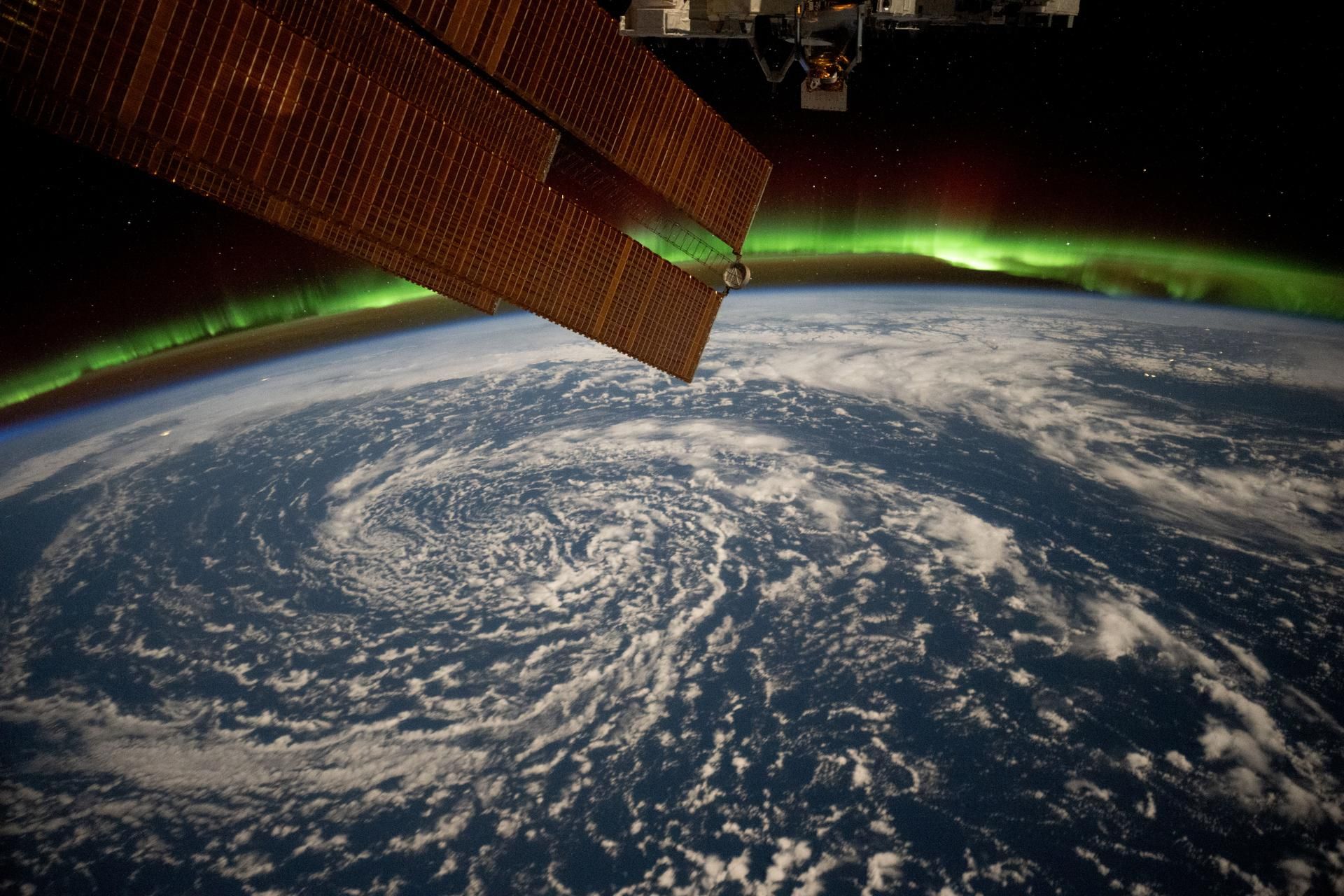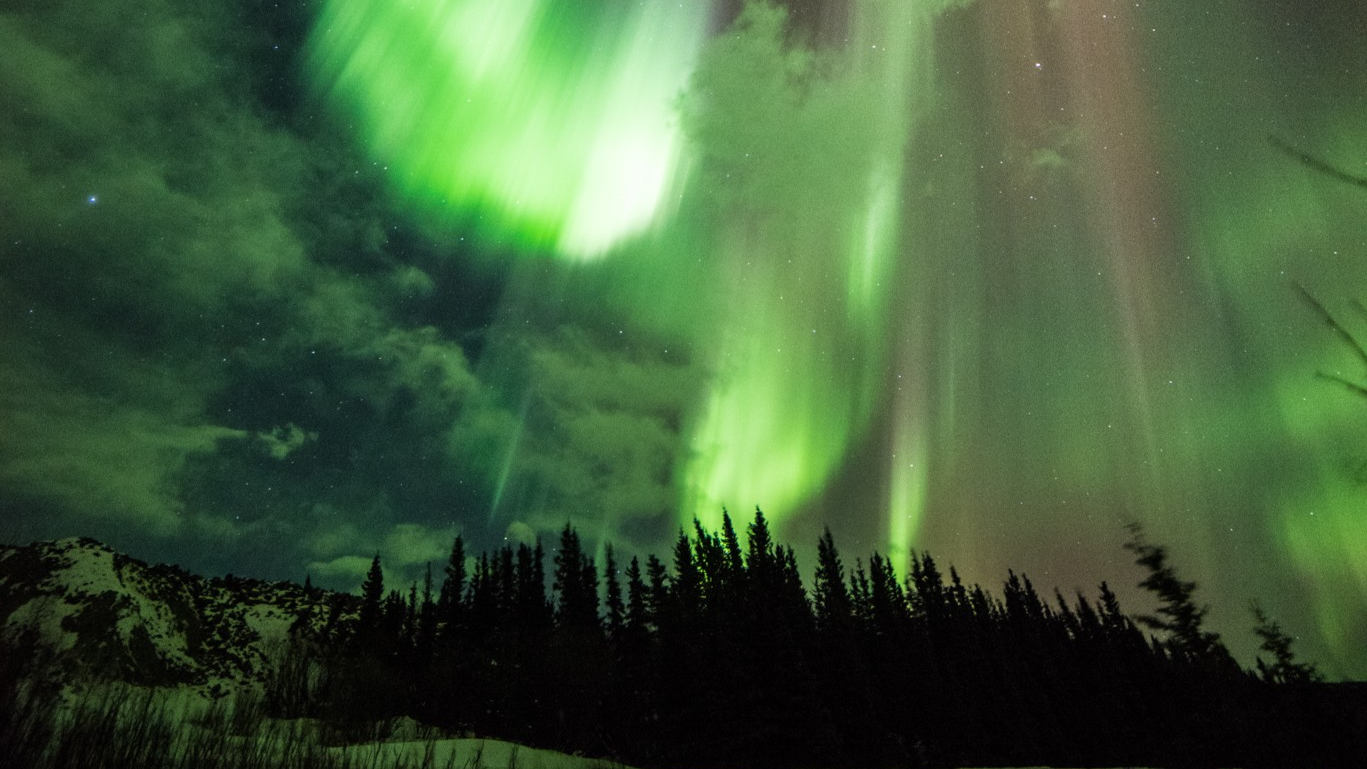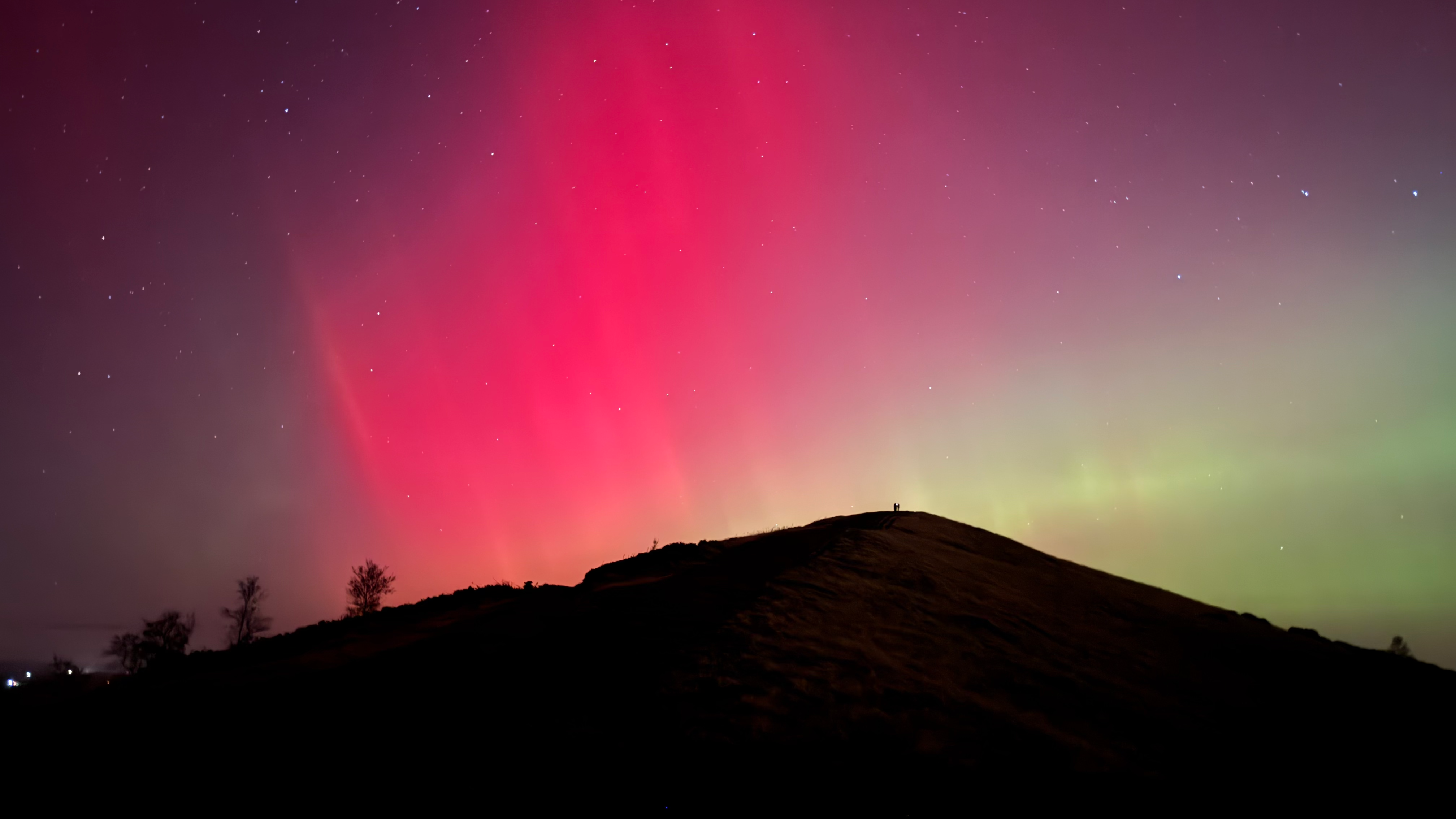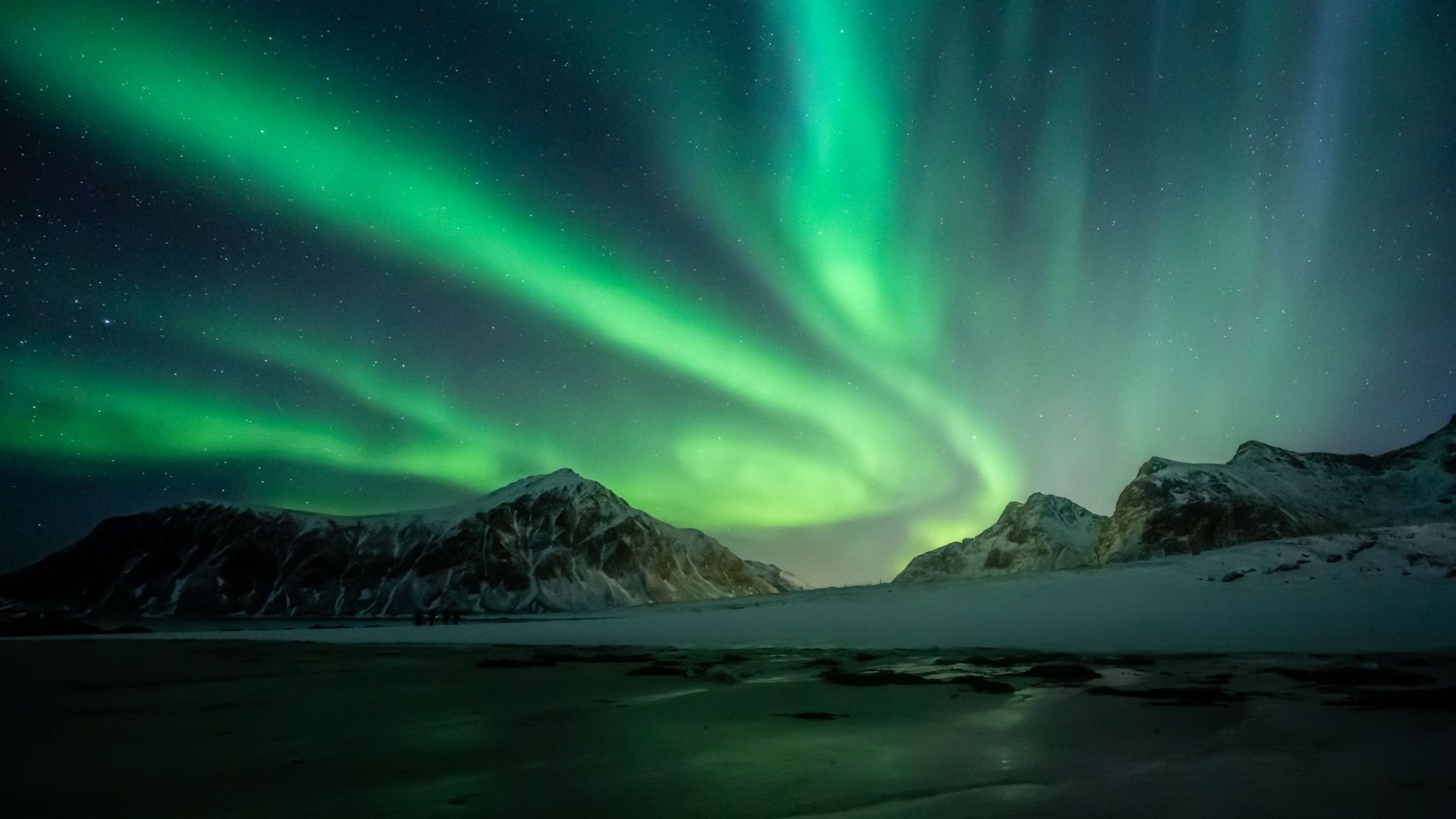The Northern Lights can only be seen under certain circumstances, which gives the impression that it’s difficult to spot this phenomenon. Well, it’s certainly not the easiest thing in the world, but it is probably easier than you think. There are many places dedicated to helping you see the aurora.
The Basics of Seeing the Northern Lights
No matter where you go in the world, there are a few basic principles to keep in mind when trying to see the Northern (or Southern!) Lights. Your location won’t change these facts. First of all, you’re very unlikely to see them during the day even if an aurora is actually active at the time, because daytime is just too bright. So your only real shot is at night, and the level of light pollution in your area will determine how easy it is to see an aurora.
So you may not want to go on an aurora hunting trip during a full moon. An aurora is also more likely to be seen when solar activity is high regardless of where you are, so you’ll want to keep an eye on things like solar flares and the KP index. If you’re able to plan a trip around times with high activity, you’ll have much better odds of seeing the Northern Lights.
But where do you actually go to see the Lights? Sure, you could theoretically traipse up to the middle of nowhere beyond the Arctic Circle to try and see it, but most of us aren’t willing to go that far. Thankfully, aurora tourism is a profitable business, so there are plenty of locations and vacations dedicated to helping you spot this phenomenon.
The Aurora at National Parks and Forests
If you love nature and hiking and camping and all that good stuff, you may be happy to learn that there are several national parks and forests that are perfect for viewing the Northern Lights, especially in North America. Now, your ability to see the Lights in these areas slightly further south than a bunch of glaciers depends on the level of solar activity we’re experiencing, which fluctuates from high to low every eleven years or so.
Thankfully, we’re entering a high activity period, so you’ll be able to see the Northern Lights more brightly and in more locations than usual for the next few years. That includes a bunch of national parks and forests. These are fantastic places to see the Northern Lights from, as they are usually far removed from any significant light pollution, allowing for one of the clearest night skies you can get short of trekking into the middle of nowhere.
A few ideal parks include the following:
- Headlands International Dark Sky Park, Michigan
- Idaho Panhandle National Forests, Idaho
- Aroostook National Wildlife Refuge, Maine
- Denali National Park, Alaska
- Glacier National Park, Montana
- Theodore Roosevelt National Park, North Dakota
Of course, there are plenty of other locations besides these as well. Honestly, any national park that is far enough north and far enough away from heavy light pollution is a very good candidate for sighting the Northern Lights, though parks that are particularly known for it, such as Headlands International Dark Sky Park, are likely your best bet.
Visiting World-Renowned Aurora Sighting Regions
There are plenty of reasons to take a vacation to the places I’m about to mention, but one of the things each of them is particularly known for is the ability to see the Northern Lights there. If you are the sort who’d rather go aurora hunting in some degree of comfort instead of hiking through a national park, these towns and cities are fantastic places to go to, more than capable of offering wonderful accommodations during your stay.
This is just a small handful of places well-known for aurora sightings:
- Fairbanks, Alaska
- Tromsø, Norway
- Reykjavik, Iceland
- Rovaniemi, Finland
- Svlabard, Norway
- Yellowknife, Canada
- Whitehorse, Canada
One of the best things about visiting famous towns and cities like these is that they are popular tourist destinations—the residents know why you are there and can help you maximize your chances of seeing the Northern Lights. They know all the best spots in the area and likely have lots of secret tips to help you out. On top of that, many of these places will have plenty of other cool stuff to see and do even if the Northern Lights don’t make an appearance.
After all, one potentially disappointing reality is to go hunting for the Northern Lights and not see them during your whole trip. If you visit a tourist town or city, you’ll have plenty of other ways to make your vacation fun even if you don’t see an aurora the whole time, so the trip itself doesn’t have to be seen as a total bust even if an aurora sighting was your goal.
Going on a Northern Lights Cruise
Admittedly, going on a cruise liner might be the most expensive option out of what we’ve discussed so far, but it’s an option nonetheless, and if you are interested in going on a cruise at some point, this would be your chance to knock out two birds with one stone, taking a cruise vacation while also getting a chance to see the Northern Lights.
Many cruise lines offer itineraries that are specifically designed to maximize your chances of seeing the Northern Lights during the trip, with their focus on touring the Arctic Circle in most cases. These cruise itineraries will often have you visiting cities in Norway, Denmark, Alaska, Canada, and more as well, so you’ll have the chance to visit some interesting places along with your cushy cruise experience.
To top it off, since these special cruises are focused on spotting the Northern Lights, they often include some special features as well, such as the presence of astronomy experts to guide your viewing or teach you about the stars during your trip. A few cruise itineraries even focus on following the aurora around, wherever it may be most likely to appear. Some even offer a “Northern Lights guarantee”, promising you will see the Lights during the trip or they’ll let you cruise again for free.
Needless to say, going on a Northern Lights cruise is the easiest way to see the Lights—the ship and crew take care of maximizing your chances, so you don’t have to gallivant around the world using an aurora tracking app yourself. If you’re interested, there are several cruise lines that offer dedicated Northern Lights cruise itineraries:
- Princess Cruises
- Quark Expeditions
- Hurtigruten
- Cunard
- Viking Cruises
- Havila Voyages
Just make sure you check all of your options and do your research on each one. Seeing the Northern Lights is the goal, but these cruises are expensive and there is more to them than an aurora viewing. You may want to figure out what else you’ll see on the trip, what special features may be offered, the overall quality of the service, and the best deal. And remember, this is the type of cruise that will probably be really cold!
Ultimately, seeing the Northern Lights is all about picking the right time and location and then praying for luck. You don’t have to go anywhere particularly special to see the aurora—even just a random spot in the wilderness far enough North would suffice. But if you want to have the easiest time of seeing this incredibly complex natural wonder, you’re best off going somewhere well-known for sightings or entrusting your chances to an expert.








